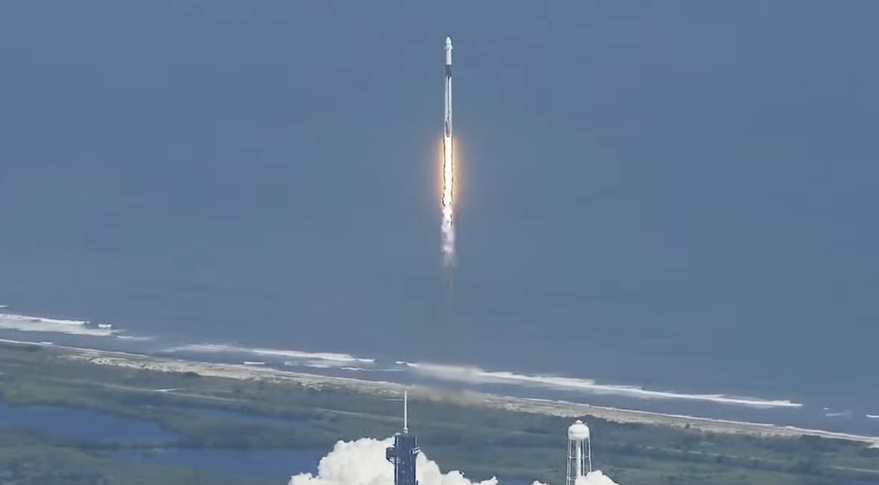WASHINGTON — A SpaceX Crew Dragon spacecraft with four people on board is on its way to the International Space Station after a successful launch Oct. 5.
A Falcon 9 rocket lifted off from Launch Complex 39A at the Kennedy Space Center at 12 p.m. Eastern after a routine countdown. The Crew Dragon spacecraft Endurance separated from the upper stage 12 minutes after liftoff. The Falcon 9 booster, making a rare first flight, landed on a droneship in the Atlantic Ocean.
The Crew-5 mission is delivering to the ISS NASA astronauts Nicole Mann and Josh Cassada, JAXA astronaut Koichi Wakata and Roscosmos cosmonaut Anna Kikina. Endurance, which previously flew the Crew-3 mission, is scheduled to dock with the ISS at 4:57 p.m. Eastern Oct. 6.
Mann is serving as commander of Crew-5 and Cassada as pilot, with Wakata and Kikina as mission specialists. All are making their first flight to space except for Wakata, who has previously flown on two shuttle missions and two ISS expeditions, having spent 347 days in space. The four will serve on the ISS for up to six months before being relieved by the Crew-6 mission next spring.
“That was a smooth ride uphill,” Mann said moments after Crew Dragon separated from the upper stage in orbit. “You’ve got three rookies that are pretty happy to be floating in space right now and one veteran astronaut who’s pretty happy to be back as well.”
NASA and SpaceX proceeded with the launch after addressing three minor problems that came up during a launch readiness review Oct. 3. That included fixing a leak in a portable fire extinguisher in the Dragon spacecraft, replacing a thrust vector control actuator in one of nine Merlin engines in the rocket’s first stage and correcting an issue with the droneship.
The launch is the first of three Falcon 9 missions SpaceX has planned in two days. Another Falcon 9 is set to launch a set of Starlink satellites from Vandenberg Space Force Base in California at 7:10 p.m. Eastern Oct. 5. A third Falcon 9 will launch from Cape Canaveral Space Force Station in Florida Oct. 6 at 7:07 p.m. Eastern carrying the Galaxy 33 and Galaxy 34 communications satellites for Intelsat.
SpaceX adjusted that schedule to accommodate the Crew-5 mission. When SpaceX postponed the Starlink launch at Vandenberg from Oct. 3 to provide additional time for pre-launch checks, it initially rescheduled the launch for Oct. 4, but said it would further delay the launch if the Crew-5 mission remained on schedule for Oct. 5.
“As always, flying the crews are our top priority and crew safety is our top priority,” said Benji Reed, senior director of human spaceflight programs at SpaceX, at an Oct. 3 briefing. He said the company didn’t have a set time to review data from a previous launch before attempting a crewed launch, but instead it depended on the data needed for review.
“We like to have about two days of stand off from, in this case, what was going to be the Starlink launch out of Vandenberg and then our launch here at the Cape,” said Steve Stich, NASA commercial crew program manager, at the briefing, to allow for data reviews before the crewed launch.
Crew-5 is the eighth crewed launch by SpaceX, all flown in less than two and a half years. In addition to the five ISS crew rotation flights, SpaceX launched the Demo-2 commercial crew test flight in May 2020 and two private astronaut missions, Inspiration4 last September and Axiom Space’s Ax-1 in April.
The next SpaceX crewed launch will be another private astronaut mission, Polaris Dawn. That was originally scheduled for late this year but is now planned for no earlier than March 2023, according to Jared Isaacman, the billionaire leader of the Polaris effort, said in a Washington Post webcast Oct. 3. He did not disclose the reason for the delay.
